We did Osaka Castle as a day trip from Kyoto, and it felt like stepping into a different chapter of Japan. Kyoto gives you temples, lantern light, quiet wood. Osaka Castle gives you stone walls, moats, gold details, and this huge “we’re making history right now” energy. The castle sits in the middle of a massive park, wrapped in water and layered walls, and even from far away you can see the white-and-green main keep with those gold tigers and shachihoko (mythical dolphin-fish) shining on the roof. Osaka Castle is one of the most famous castles in Japan, and it played a key role in unifying the country in the late 1500s, during the age of samurai warlords.
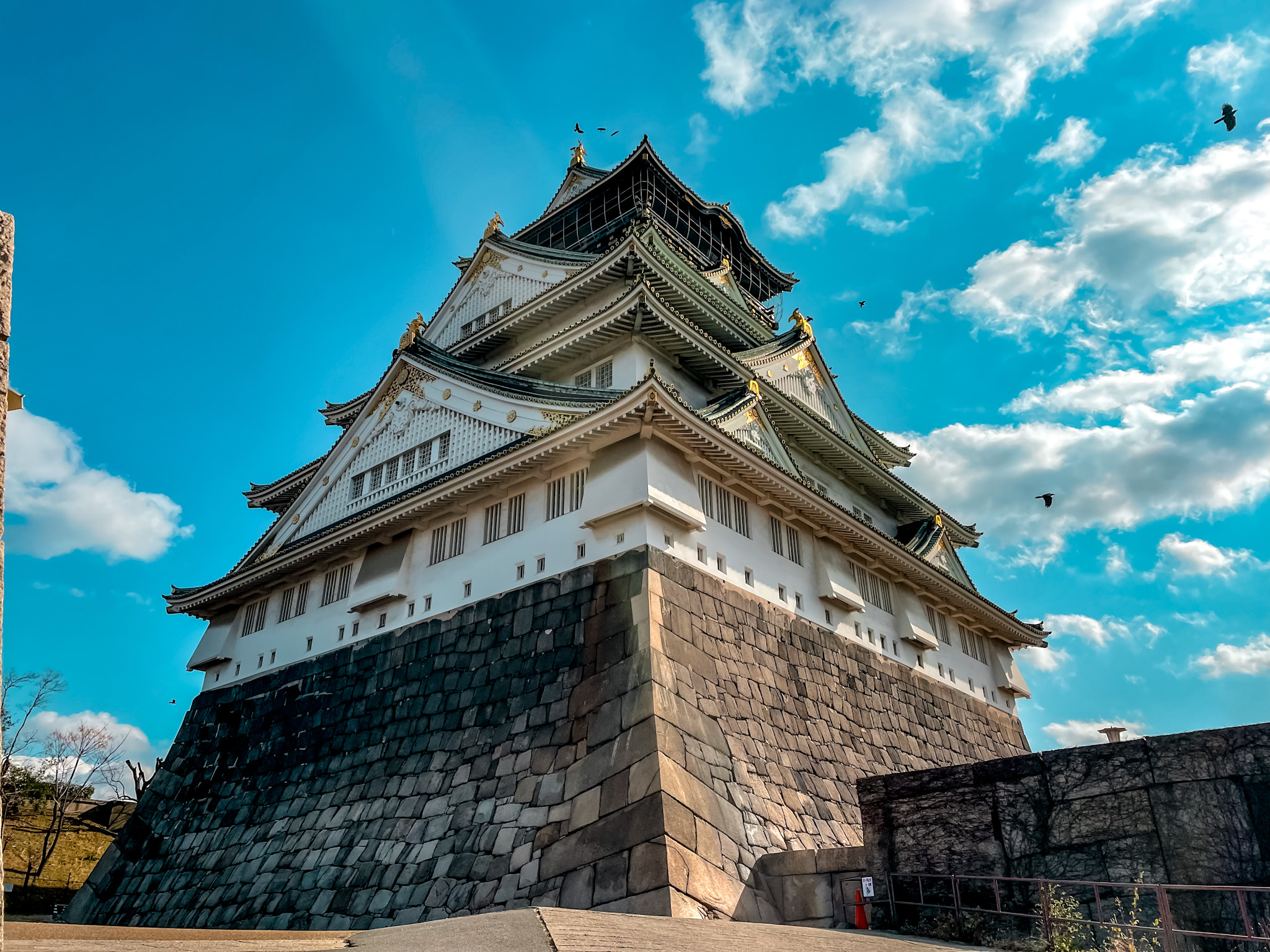
A very fast history (so you know what you’re looking at)
Osaka Castle was first built in 1583 by Toyotomi Hideyoshi, one of the great unifiers of Japan. He chose this spot on the former grounds of the powerful Ishiyama Hongan-ji Temple and set out to build something bigger and more impressive than even Oda Nobunaga’s stronghold. The main tower was designed to glow with gold and send a message: “this is the center of power now.” Construction wrapped in 1597. Hideyoshi died the next year, and the castle passed to his son.
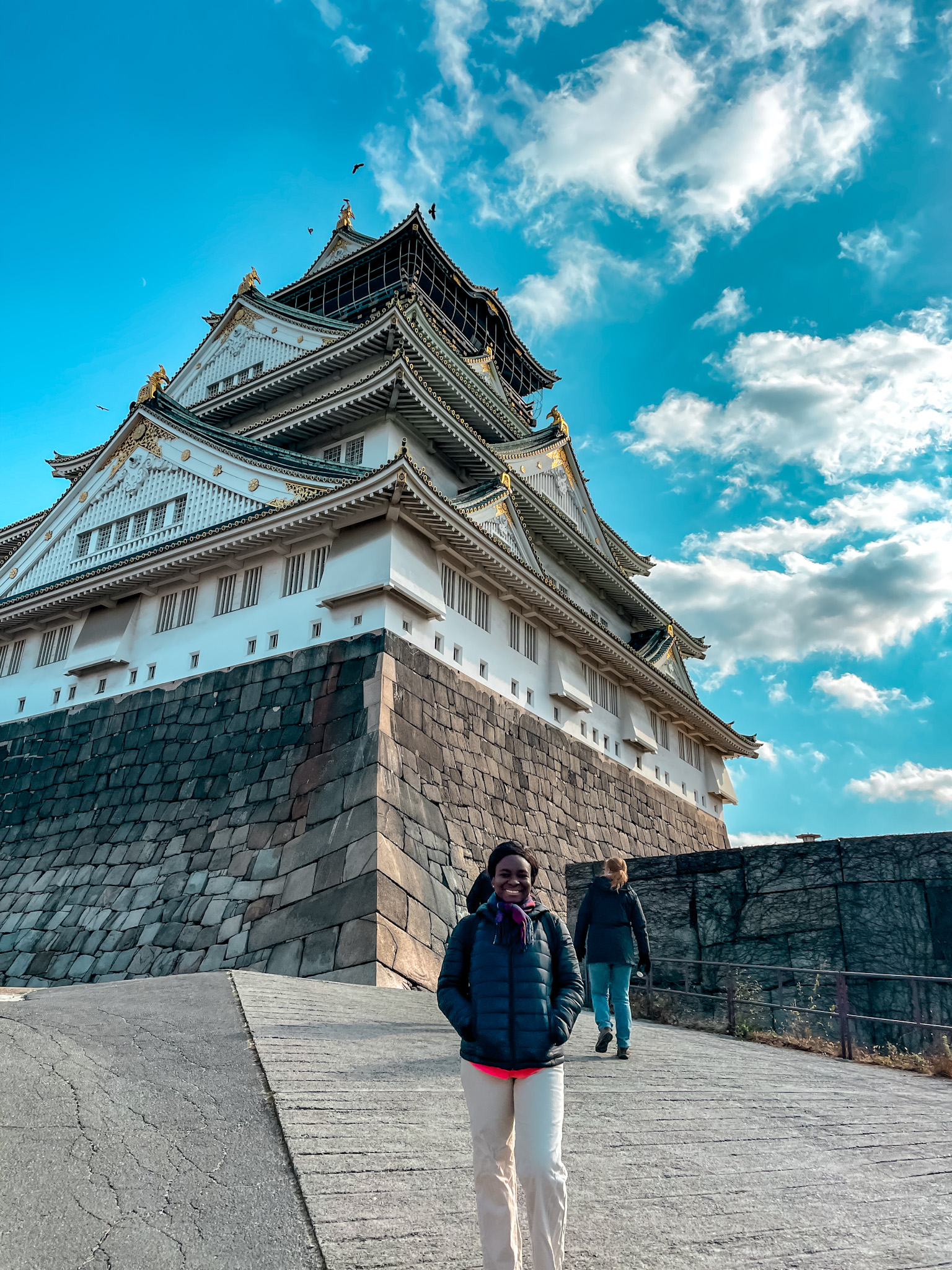
That didn’t last. In 1614 - 1615, Tokugawa Ieyasu (the warlord who would go on to found the Tokugawa shogunate) besieged Osaka Castle, broke the Toyotomi resistance, and essentially ended that bloodline’s claim to power. After taking over, the Tokugawa rebuilt the castle starting around 1620, adding huge stone walls made from massive quarried granite blocks, some still there today, and raising a new main tower as an administrative and military base in western Japan. Lightning and fire took that tower down in the 1600s. Over the centuries the castle kept getting damaged, repaired, neglected, repaired again.
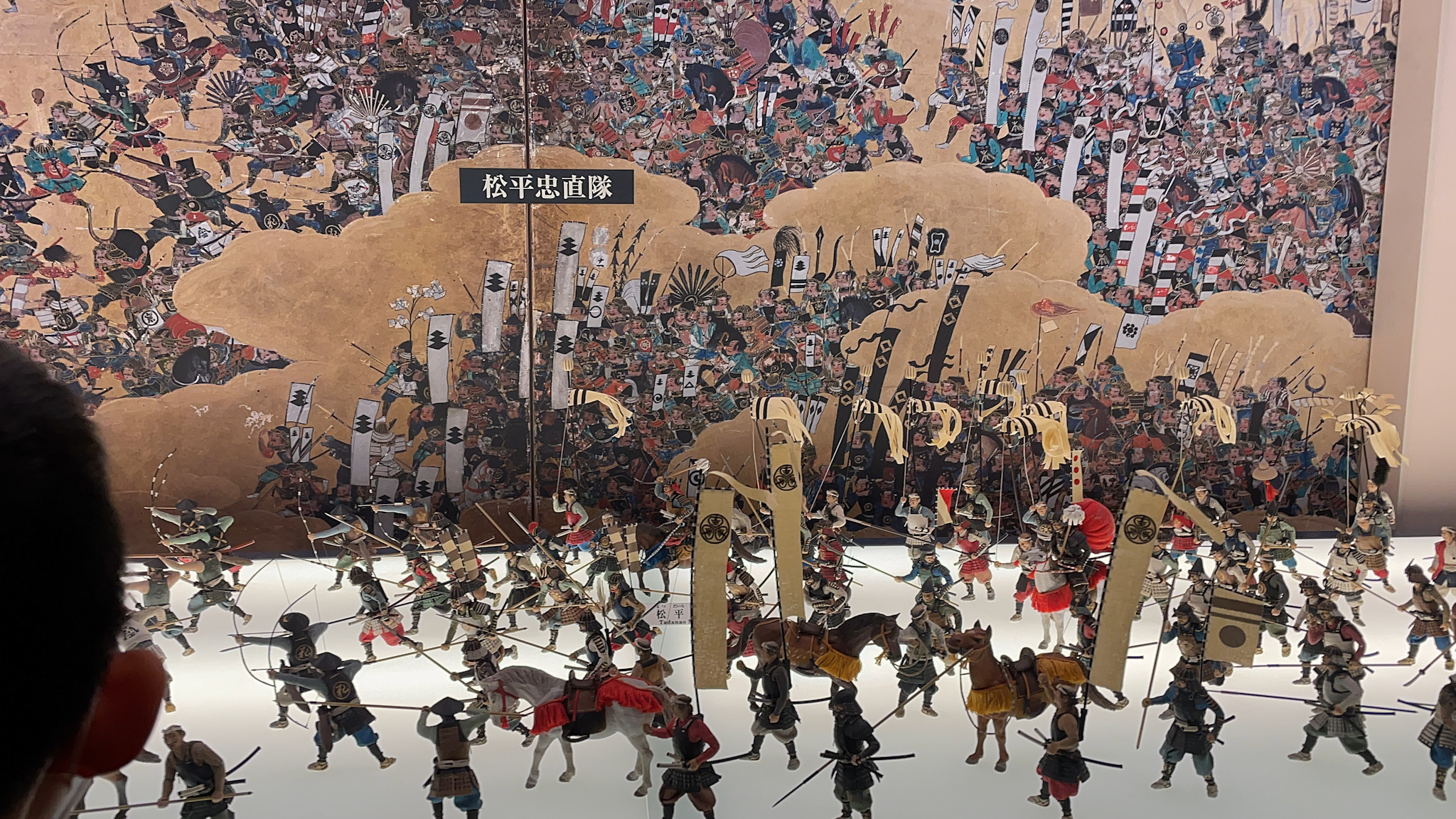
The current main keep is a modern reconstruction, finished in concrete and reinforced, with a museum interior and an elevator inside, so when you go in, it’s not feudal-era stairs all the way up, it’s more like: museum floors, exhibits, and then a 360° observation deck at the top. From outside, though, it still looks like a traditional eight-story tower stacked on massive stone ramparts and surrounded by moats.
So yes: it’s old, it’s new, it’s been burned, rebuilt, struck by lightning, shelled, and still stands as Osaka’s icon. That’s part of why it matters.

Getting there (Kyoto day trip vs staying in Osaka)
From Kyoto (what we did):
The easiest way is rail. You hop a JR Special Rapid Service / JR Kyoto Line train from Kyoto Station → Osaka Station. It’s about 30 minutes and roughly ¥560–¥580 one-way if you’re not using a rail pass. You don’t need a reservation; just get on the correct rapid service. From Osaka Station, transfer to the JR Osaka Loop Line and ride to Osakajōkōen Station (about 10 minutes, ~¥180). That station basically drops you in Osaka Castle Park on the northeast side. From there it’s a walk (15–20 minutes through the park) to the main keep.
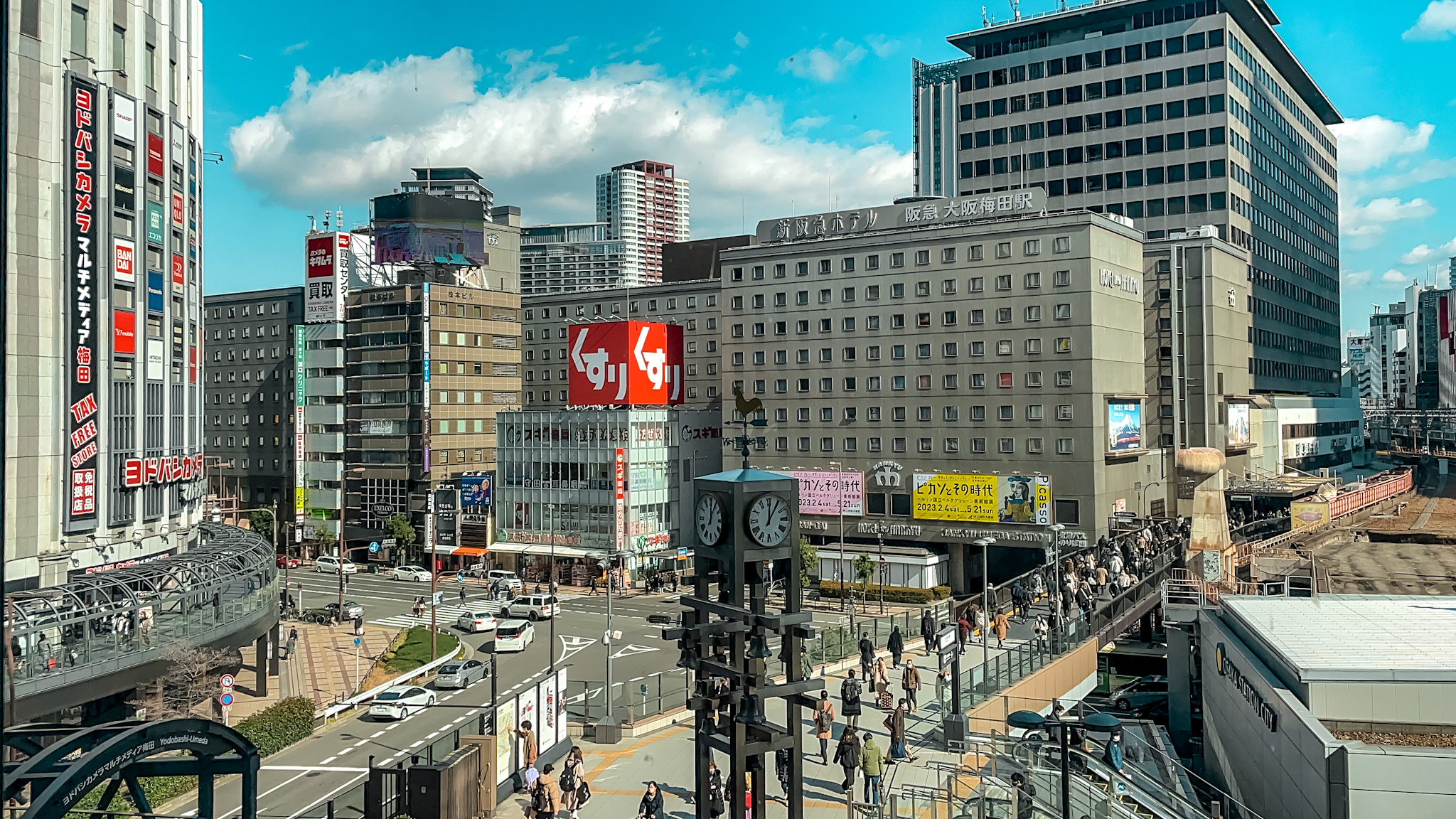
That’s the Kyoto → Castle route in normal-person language: Kyoto Station → Osaka Station → Loop Line → Osakajōkōen → stroll through the park → castle.
You can also take the shinkansen from Kyoto to Shin-Osaka in ~15 minutes and then hop local lines, which is great if you already have a JR Pass or you’re obsessed with bullet trains.
If you’re already in Osaka:
You’re spoiled. The castle is surrounded by multiple convenient stops:
- JR Osakajōkōen Station on the Osaka Loop Line (northeast side of the park, closest JR access).
- Morinomiya Station (JR Loop Line / Osaka Metro Chūo Line / Nagahori Tsurumi-ryokuchi Line) on the southeast side.
- Tanimachi 4-chōme Station (Osaka Metro Tanimachi Line & Chūo Line) on the southwest/west side.
All of these drop you on the edges of Osaka Castle Park; from there you walk in through the gates and across the moats.
If you’re staying near Umeda / Nishi-Umeda / Namba, just ride subway or the Loop Line. You don’t need a taxi unless you’re carrying luggage or have mobility needs.

What you’re actually walking into
Osaka Castle Park is huge, think lawns, woods, moats, stone walls, and this striking white-and-green tower floating over it all. The inner keep area sits on raised stone platforms with layered defenses and both wet and dry moats, and the whole park spreads across tens of hectares with seasonal flower spots, event stages, and even an arena (Osaka-jō Hall). During cherry blossom season, the entire place turns into hanami central: blankets on the grass, food stalls, taiko drums, selfie sticks, the works. People come for the castle, yes, but also just to be under the trees. Peak bloom around the castle is usually late March to early April, and it’s one of the most famous sakura spots in Osaka.
The park itself is open 24/7, so you can wander the outer grounds early morning or at sunset for free. The paid part is the main keep (castle museum) and certain gardens.

Inside the main keep (a.k.a. the museum + the view)
Inside the castle & the view from the top
The inside of Osaka Castle is set up like a museum now, not an untouched old fortress. Each floor walks you through the story of Toyotomi Hideyoshi, the battles for control of Osaka, samurai armor, swords, maps, folding screens, and how the original castle was engineered. It’s a good pause point if you like context and want to understand why this place mattered so much in unifying Japan. You’ll see models of the sieges, scale layouts of the moats and walls, and artifacts tied to the Toyotomi and Tokugawa families.
You take the elevator up (which is a blessing on busy days), then work your way down floor by floor. At the very top there’s an open-air observation deck that wraps around the tower. The views from the top are always amazing. You’re high enough to see the rings of stone walls and moats from above, the green of Osaka Castle Park spreading out below you, and the modern Osaka skyline in every direction. It’s the contrast that hits: samurai-era stronghold in the middle of glass towers and train lines. Walk the full loop, take your photos, and point out the massive quarried stones in the walls - from up there you can actually see how huge they are and how layered the defenses were.
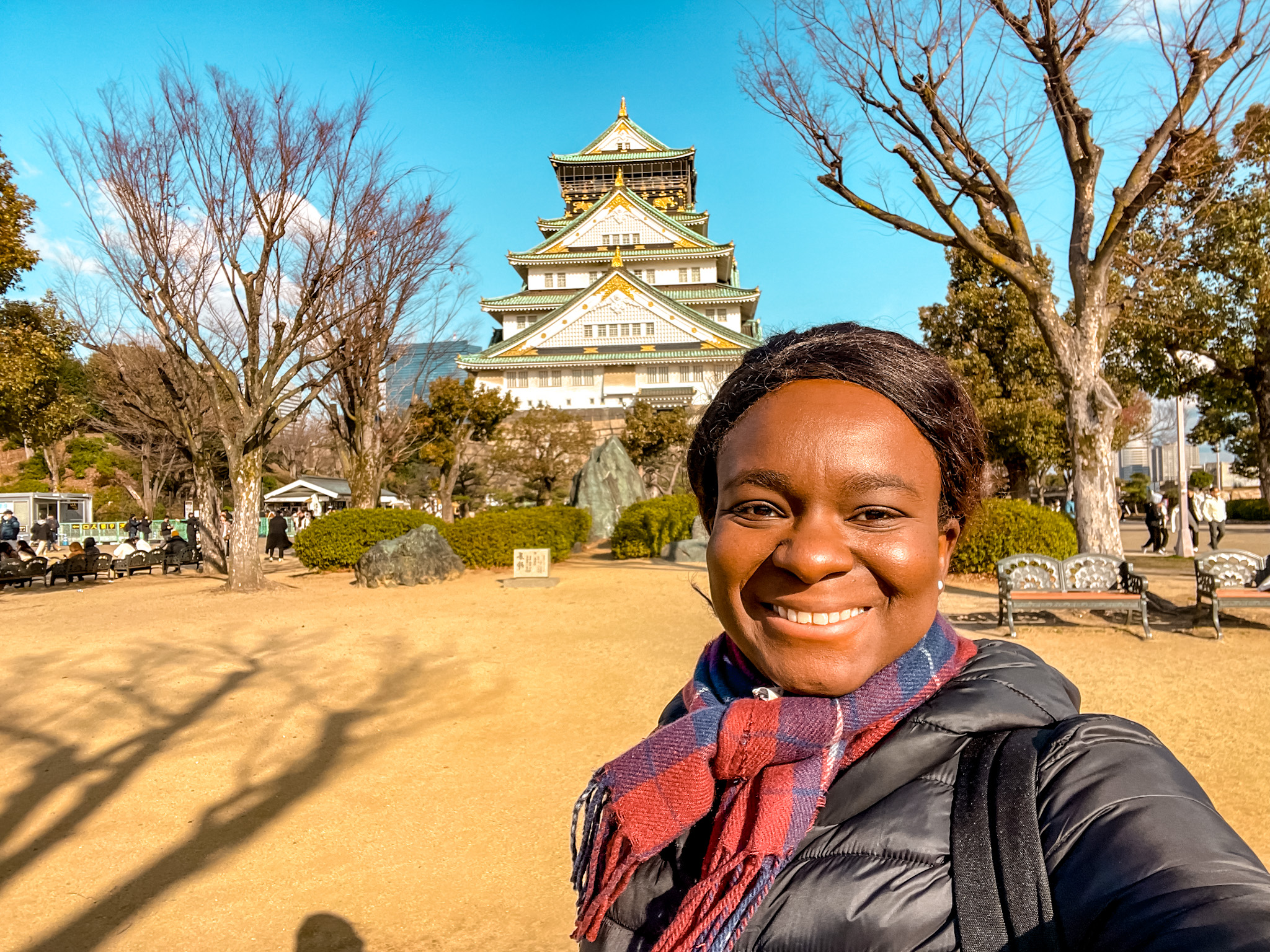
Pro tip: if you have kids, or anyone who’s not into reading every plaque, promise them “the view at the top” and they’ll stay motivated through the museum floors. Then you can slow down on the way back down and actually look at the exhibits without rushing.
Plan at least an hour if you’re going inside, longer if you’re a “read every panel” person.
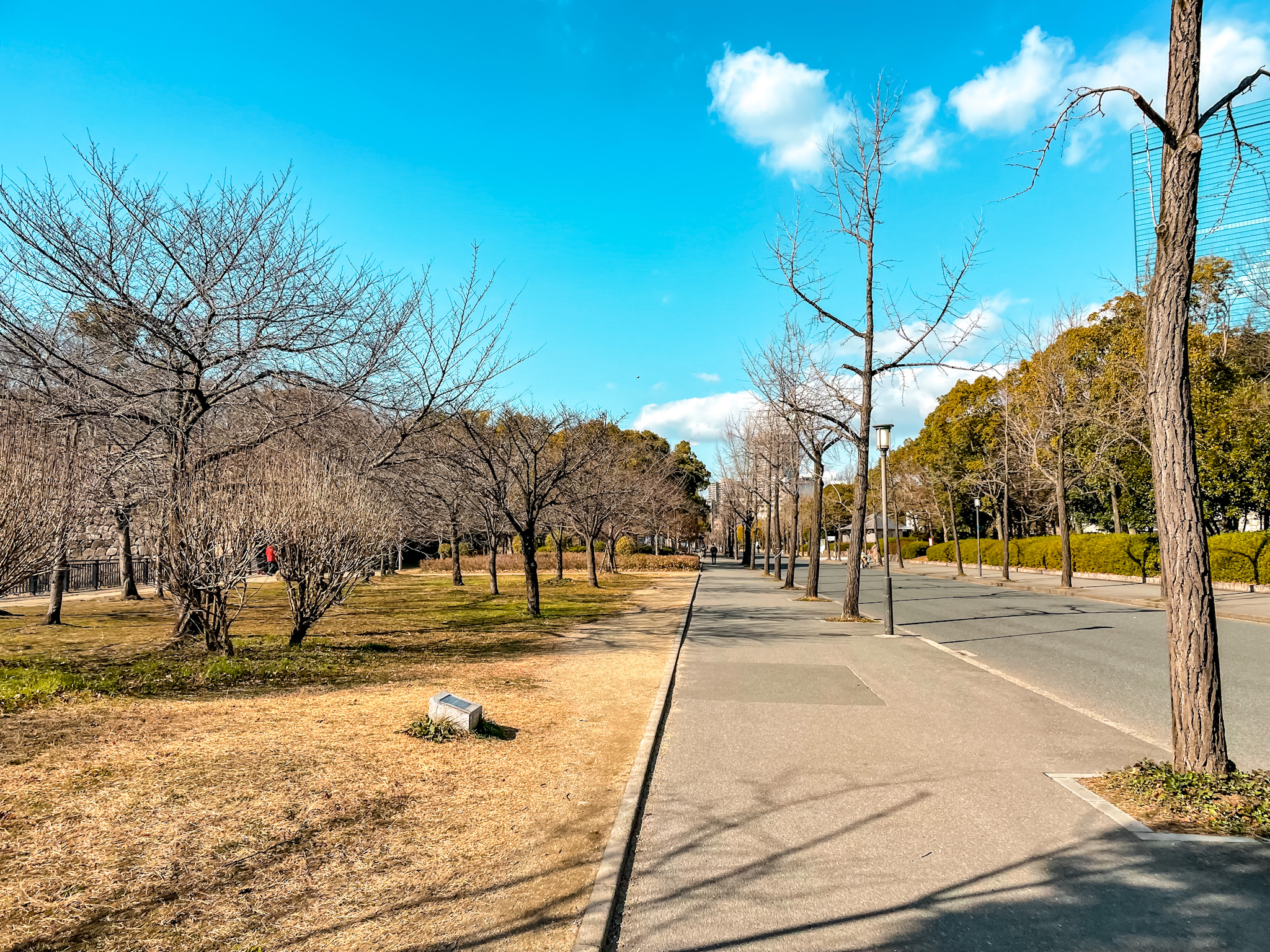
Tickets, hours, and timing (don’t skip this part)
- Main keep / Osaka Castle Museum:
- Typical hours: 9:00–17:00, last entry around 16:30 (on busy seasons they sometimes extend later).
- Closed for New Year holidays (roughly Dec 28–Jan 1).
- Admission: as of 2025, about ¥1,200 for adults, ¥600 for high school/university students, and younger kids free with ID. (Prices rose recently from the old ~¥600 adult ticket.)
Lines can form at midday, especially during sakura season and weekends. You can buy tickets on-site, but if you’re there in peak bloom, it’s smart to go early or pre-purchase an e-ticket so you’re not spending 40 minutes in a line just to start climbing.
- Nishinomaru Garden (West Garden):
This is the lawn and cherry-tree garden just west of the keep. Normally it’s a small paid area (around ¥200 adults) with nice views of the castle across a moat. During cherry blossom season it basically becomes Osaka’s postcard: extended evening hours, thousands of blossoms lit up at night, and special seasonal pricing (recent festivals list entry at ¥350+ for high school age and up during nighttime hanami). Expect crowds, but also: lantern-lit petals over water. It’s worth it if you’re there in spring.
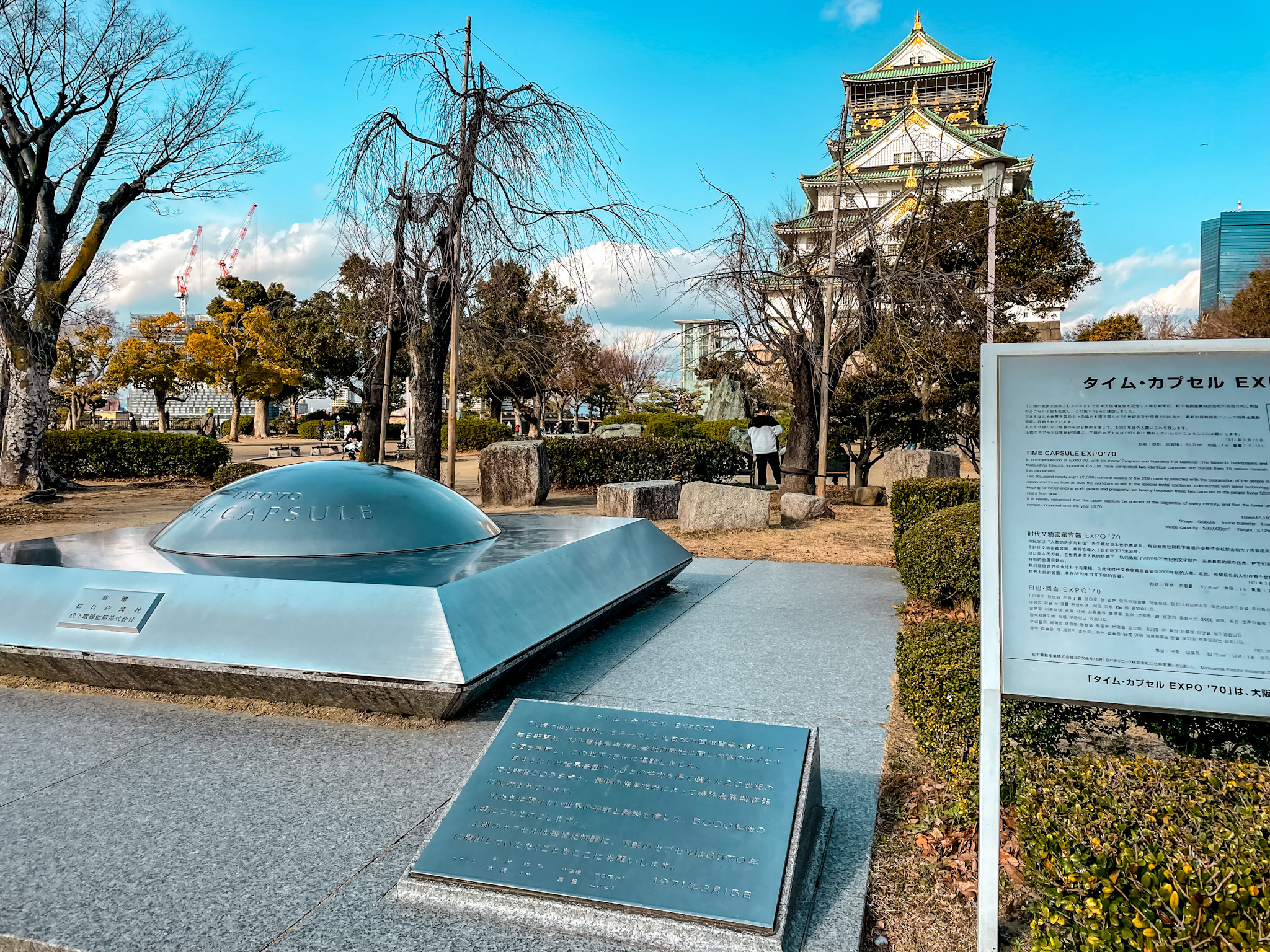
Bonus: the Expo ’70 Time Capsule at Osaka Castle
One little thing most visitors walk right past: Osaka Castle Park is also home to the Expo ’70 Time Capsule. In 1970, for the World Expo in Osaka, Panasonic (then Matsushita Electric) and The Mainichi Newspapers created two identical capsules and buried them just south of the main tower in Osaka Castle Park. Each capsule was packed with thousands of everyday objects from 1970 Japan, tech, culture, toys, records of daily life, basically a message to the future about who we were.
Here’s the wild part: one capsule is meant to stay sealed for 5,000 years. The other was designed to be opened on a schedule, first in the year 2000, then every 100 years after that, so future generations can check the condition of what’s inside and update preservation methods if needed. Both were buried in 1970–1971 at the castle site, about 8–15 meters underground, and there’s a low stainless-steel monument in the park marking where they are.
It’s a small stop, but if you’re into history (or you’re traveling with kids who like sci-fi “what will the future think of us?” moments), it’s worth pointing out. Osaka Castle isn’t just samurai and stone walls, it’s also a literal time message to people 5,000 years from now.
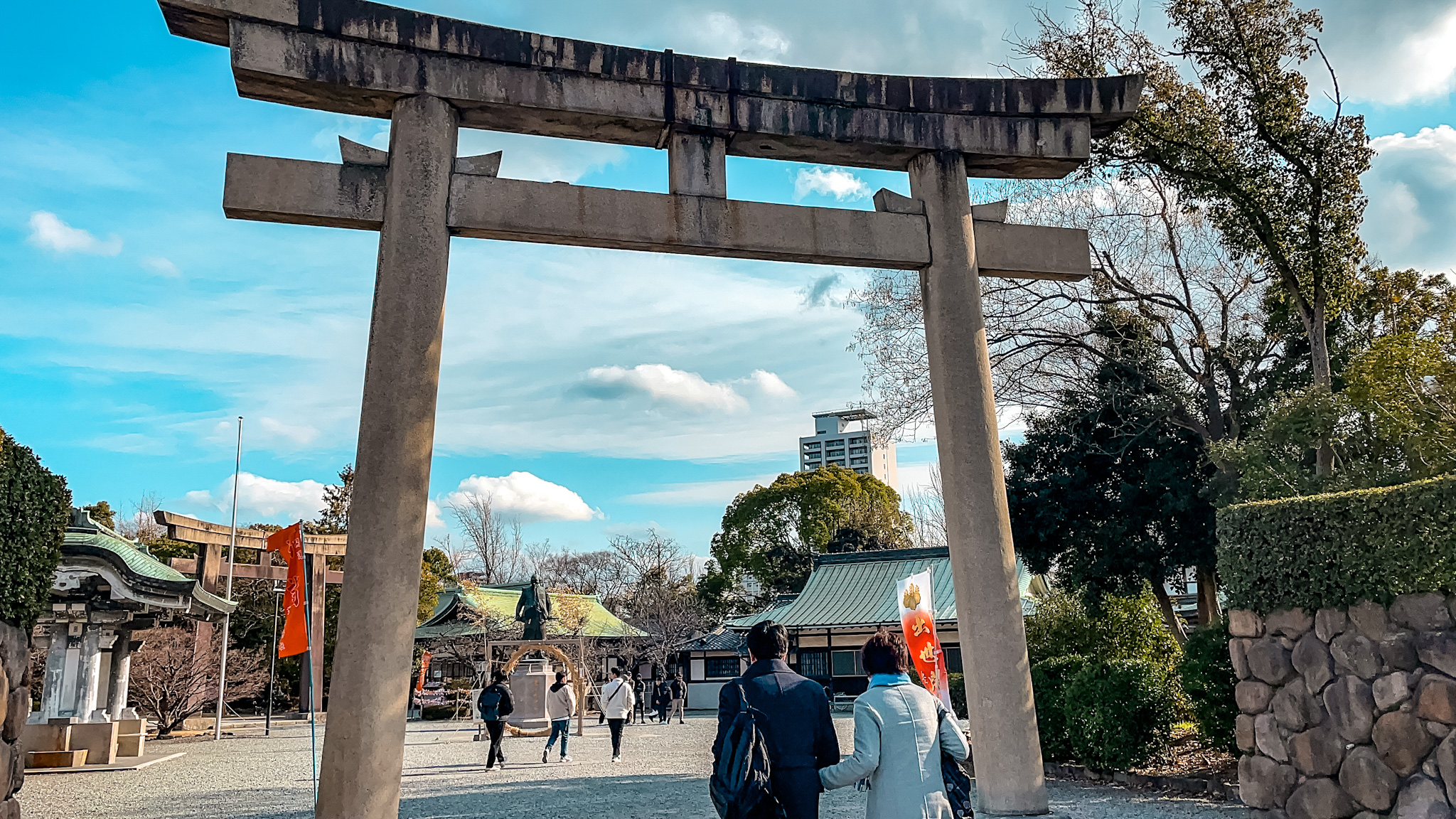
When to go (season by season)
- Cherry blossom (late March–early April): Peak drama. This is when Osaka Castle shows up all over your feed. It’s also the most crowded, and Nishinomaru Garden often opens for night viewing with illuminations and food stalls.
- Summer: Hot and humid, but the park is green and lively. Bring water, a hat, and patience.
- Fall: Cooler air, pretty leaves, more space to breathe.
- Winter: The crowds thin out and the stone walls feel extra massive. On clear cold days, that white-and-gold tower against a blue sky is gorgeous.
Morning is calmer. If you want uncrowded castle photos, get there near opening and head straight toward the inner keep before tour groups stack up. Late afternoon can also be beautiful for golden light on the tower (and, if you’re not going inside, you can still enjoy the park for free until after dark).
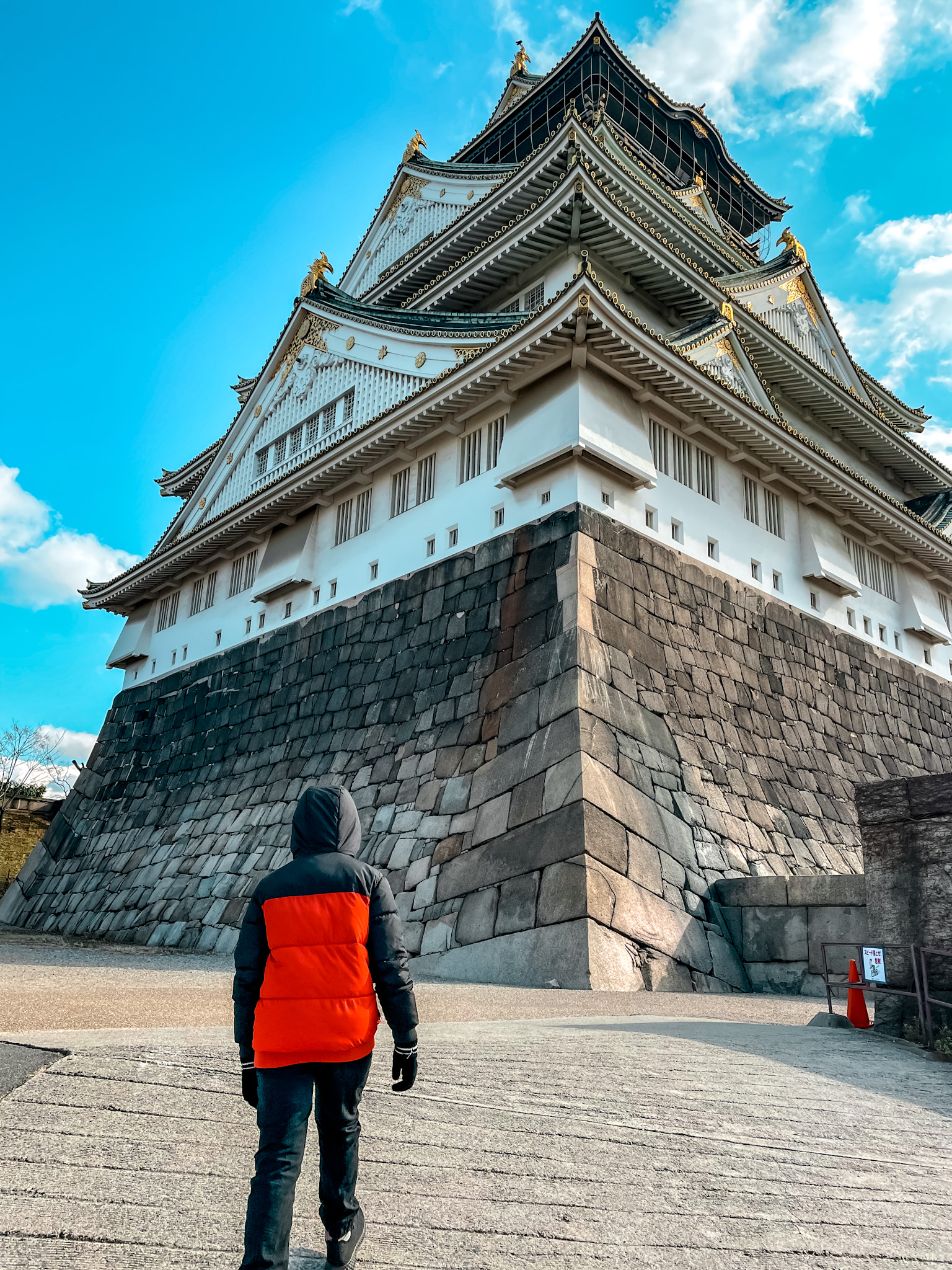
Walking the grounds without wasting energy
Osaka Castle is surrounded by moats and layered gates. You don’t just “pull up” to the front door; you weave in. The classic walk from Osakajōkōen Station brings you through Osaka Castle Park, across bridges, under huge stone walls, and toward the Otemon and Sakuramon gates that funnel you into the inner bailey. Expect some incline and cobblestone-style stone paths near the keep.
If long walks or slopes are hard for you (or you’re pushing a stroller), look for the small paid shuttle carts that run inside the park and can drop you closer to the castle tower. Wheelchair users can ask staff for elevator access at the keep, but the approach from the station still involves distance, so plan breaks.
Inside the keep: go up by elevator first, enjoy the observation deck views, then work your way down floor by floor through the museum. That way gravity is helping you, not punishing you.
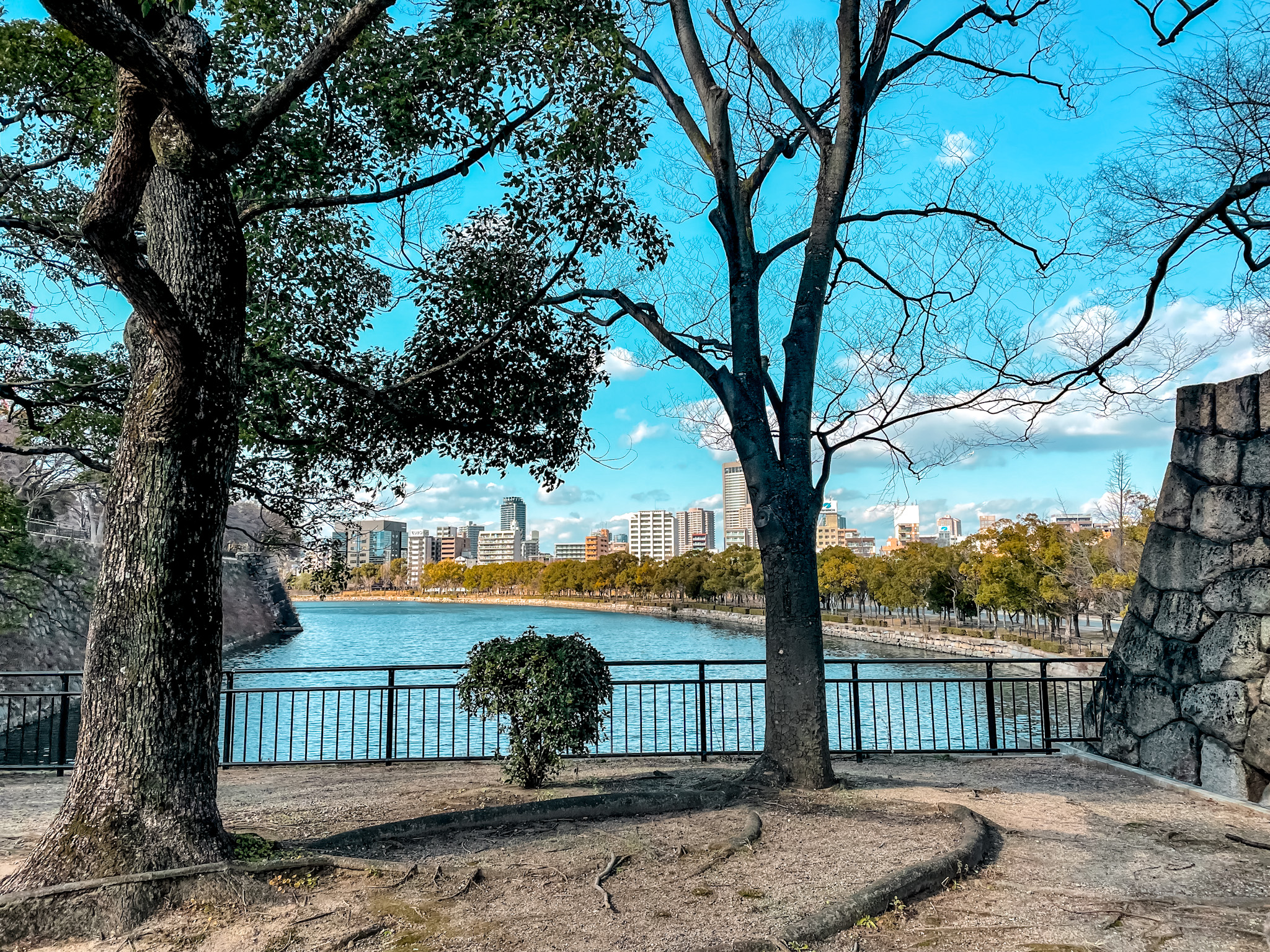
What else is on site (don’t just sprint in and out)
You’ll notice restored military-style brick buildings near the main keep, these hold cafes, shops, and rest areas now. There are also moat cruises in little golden boats that circle the inner moat and let you look up at the stone ramparts from water level. And in spring, the castle park turns into a full festival zone with food stalls and taiko performances. The castle isn’t just a monument; it’s a living public space for the city.

Need-to-know at a glance
- Why it matters: Built in 1583 by Toyotomi Hideyoshi, Osaka Castle helped cement the unification of Japan. The modern keep is a reconstruction, but the base, moats, and stone walls speak directly to that era of warlords and power shifts.
- Where it is: Osaka Castle Park, Chūō-ku, Osaka; surrounded by water and green space. Closest JR stop is Osakajōkōen Station on the Osaka Loop Line.
- From Kyoto: JR Kyoto Station → Osaka Station (~30 min, ~¥560+), then Loop Line → Osakajōkōen (~10 min). Easy day trip.
- Hours / cost: Castle keep museum usually 9:00–17:00 (last entry ~16:30); ~¥1,200 adults / ~¥600 students, kids free. Nishinomaru Garden is extra (normally ~¥200) and runs special night hanami openings (~¥350+) during cherry blossom season.
- Best season: Late March–early April for cherry blossoms, when the moats and lawns explode in pink and the park lights trees at night.
- Accessibility: Park paths are mostly paved; the keep has elevators and staff assistance, but the approach can be long and slightly uphill. Shuttle carts can help if walking distance is an issue.
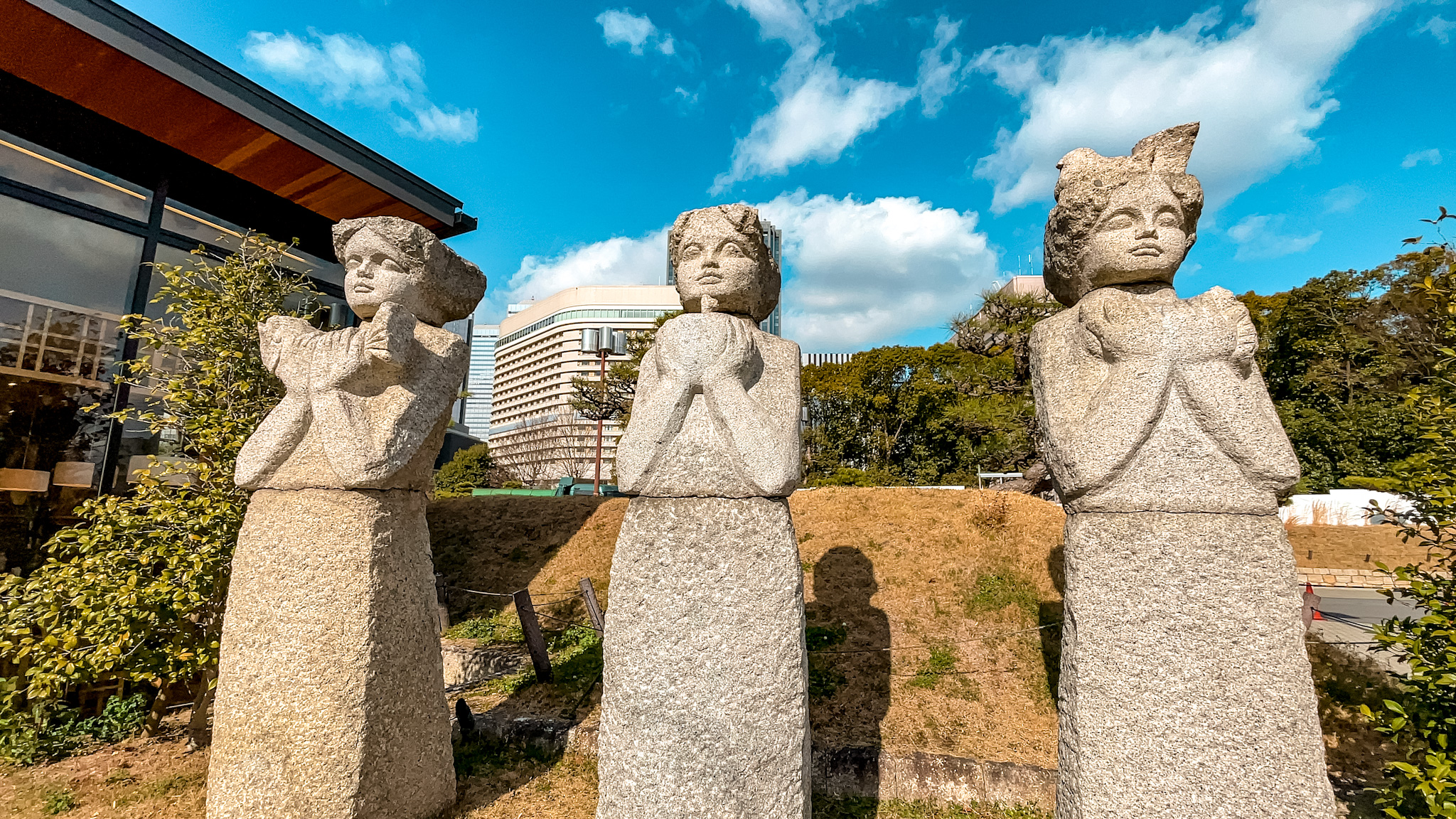
Osaka Castle is not just “a castle.” It’s power, memory, survival, and now, honestly, a really pretty park day. Do it as a Kyoto day trip or pair it with an Osaka food night, but give yourself enough time to actually walk the moats, climb (or elevator) up, and look out over the city Toyotomi Hideyoshi once planned to rule.

